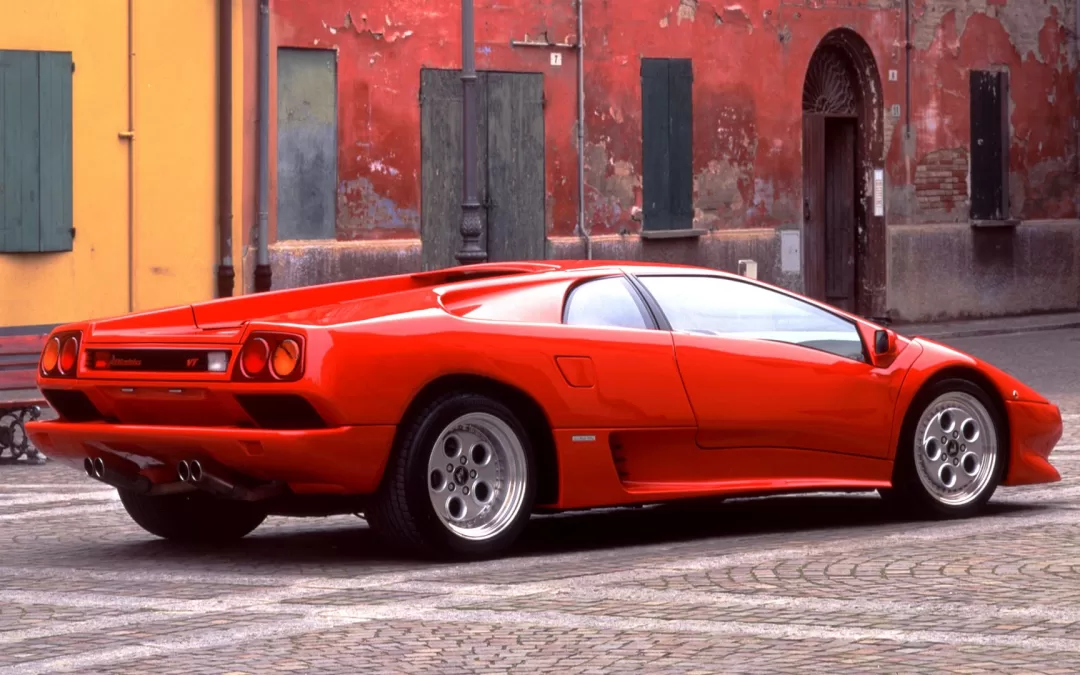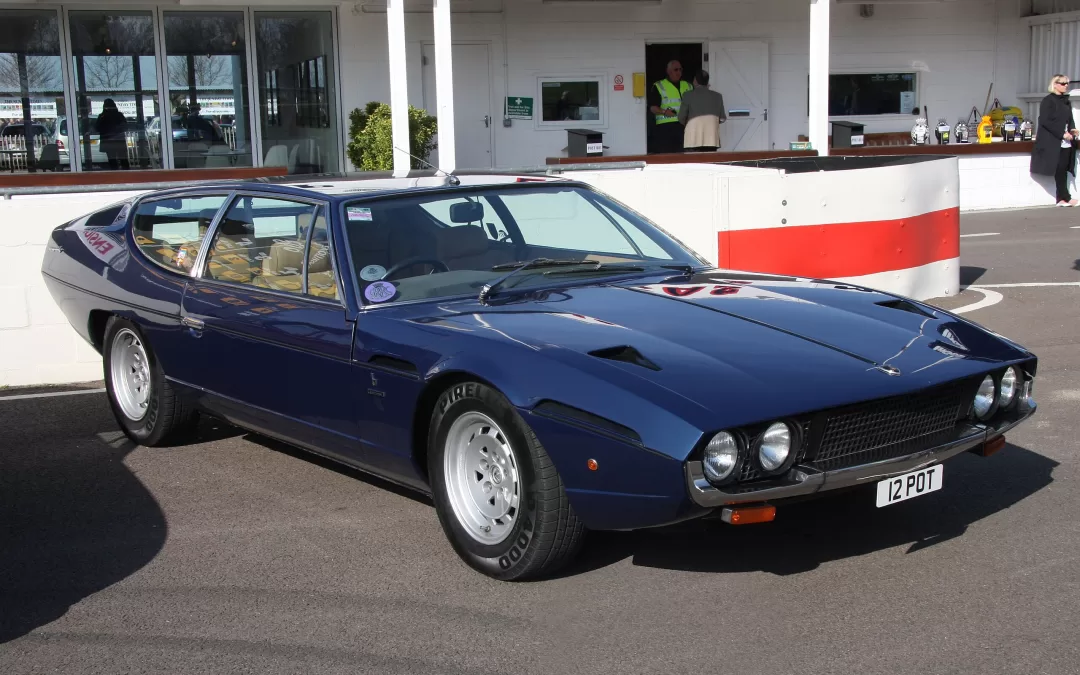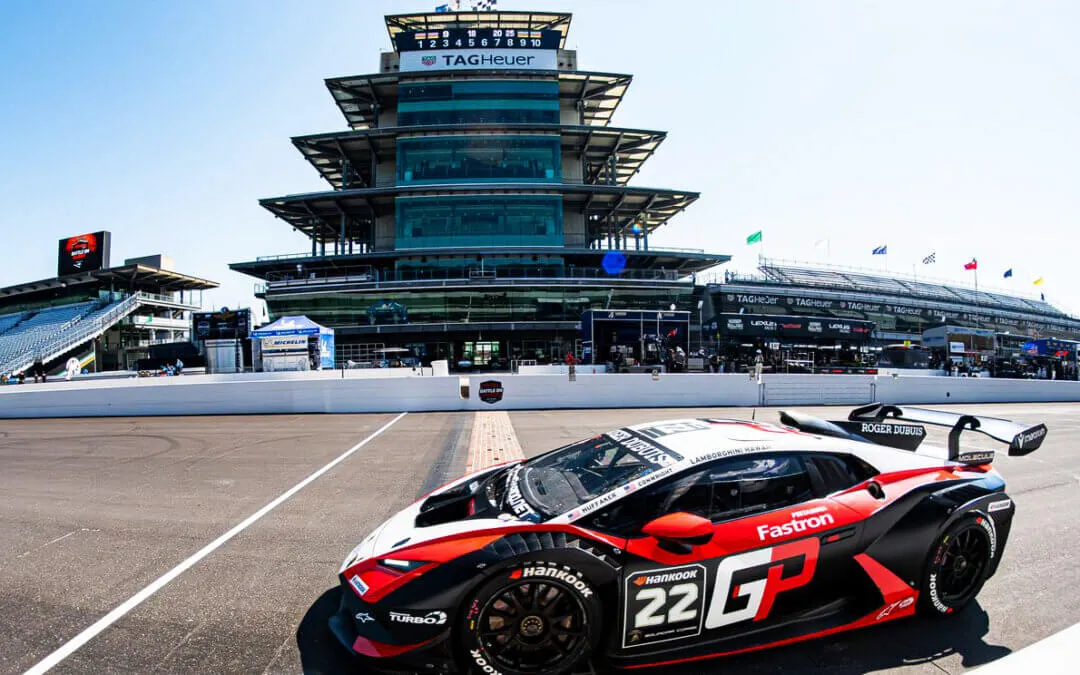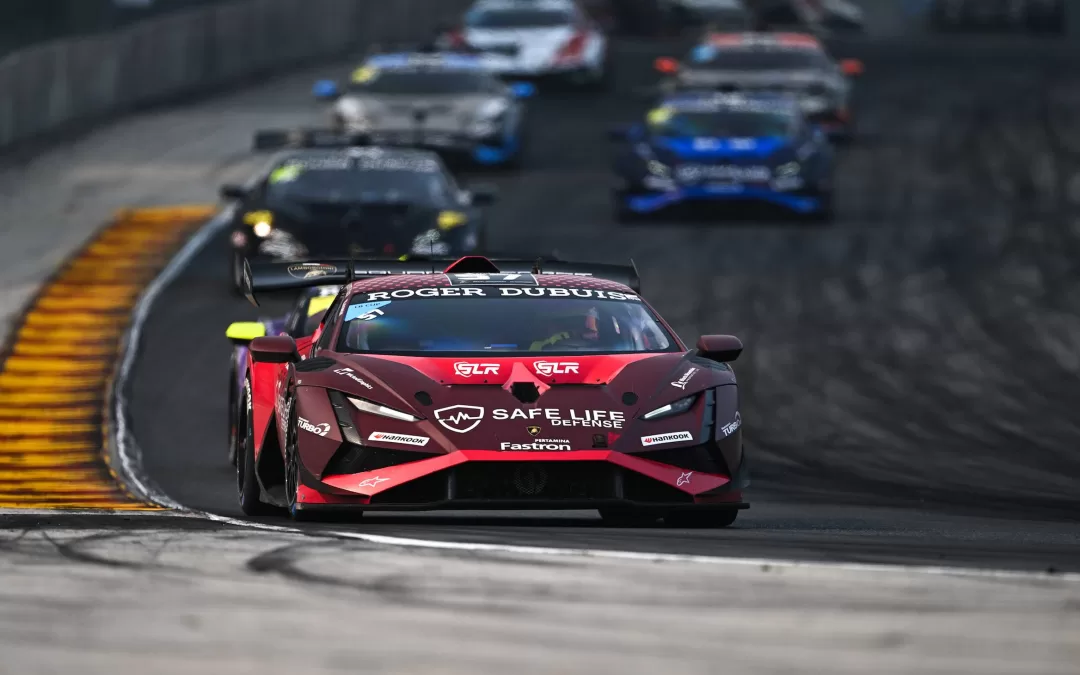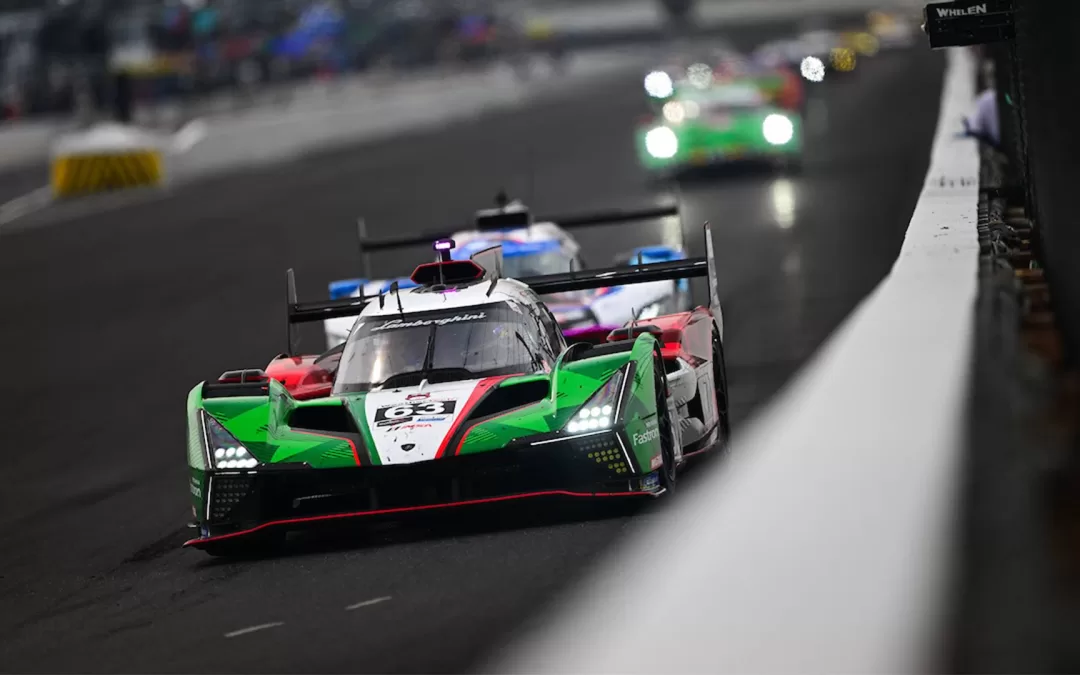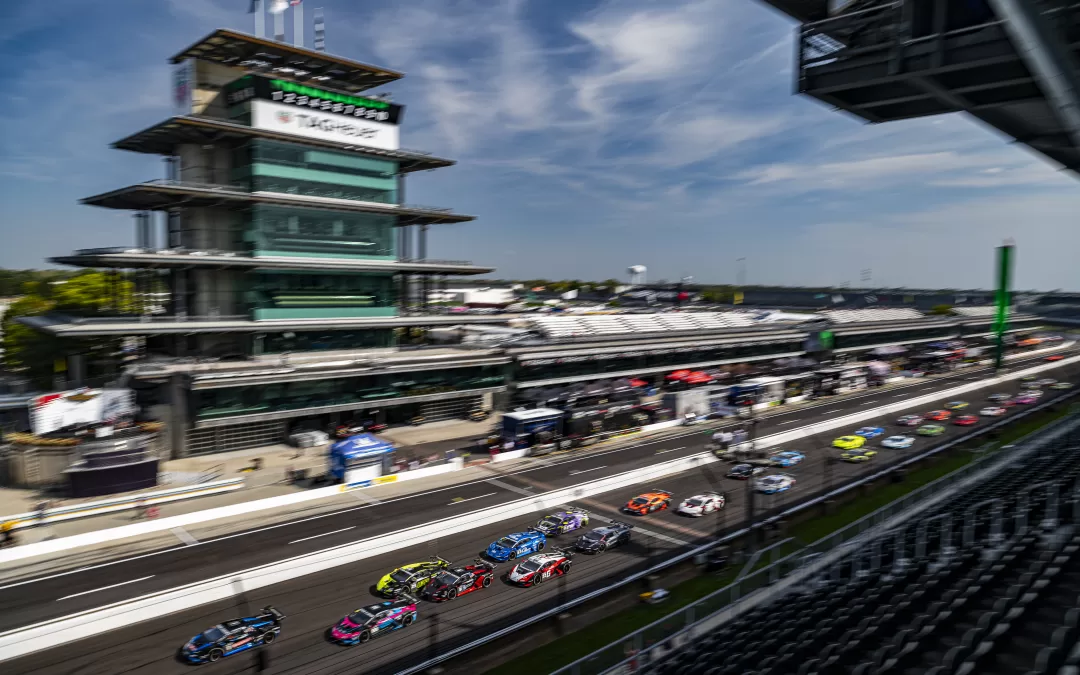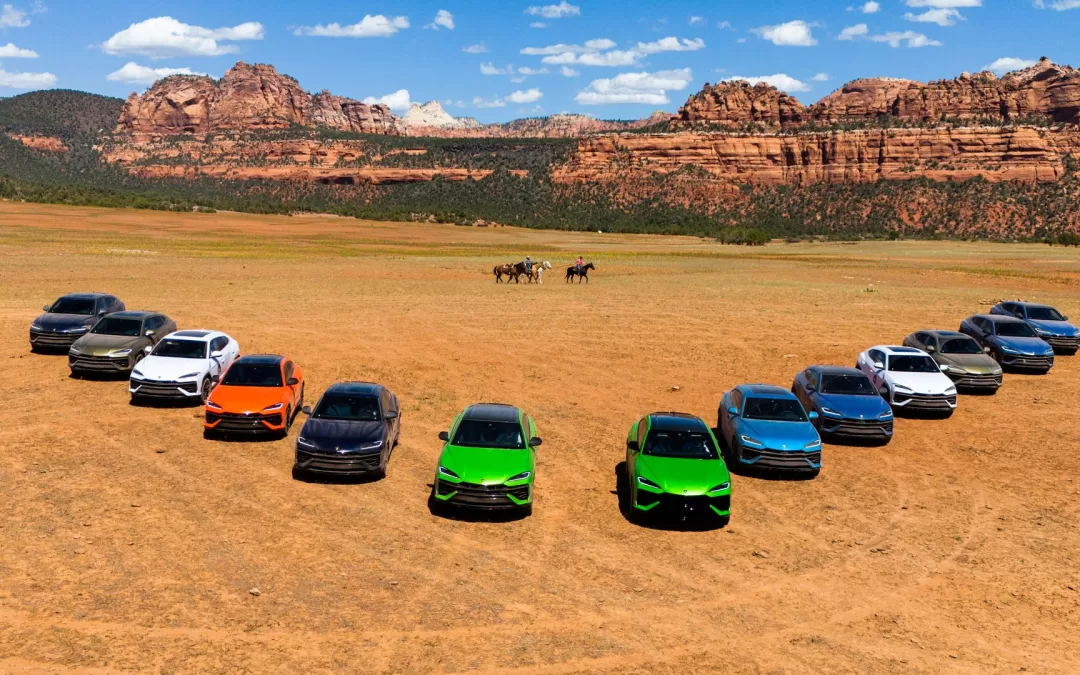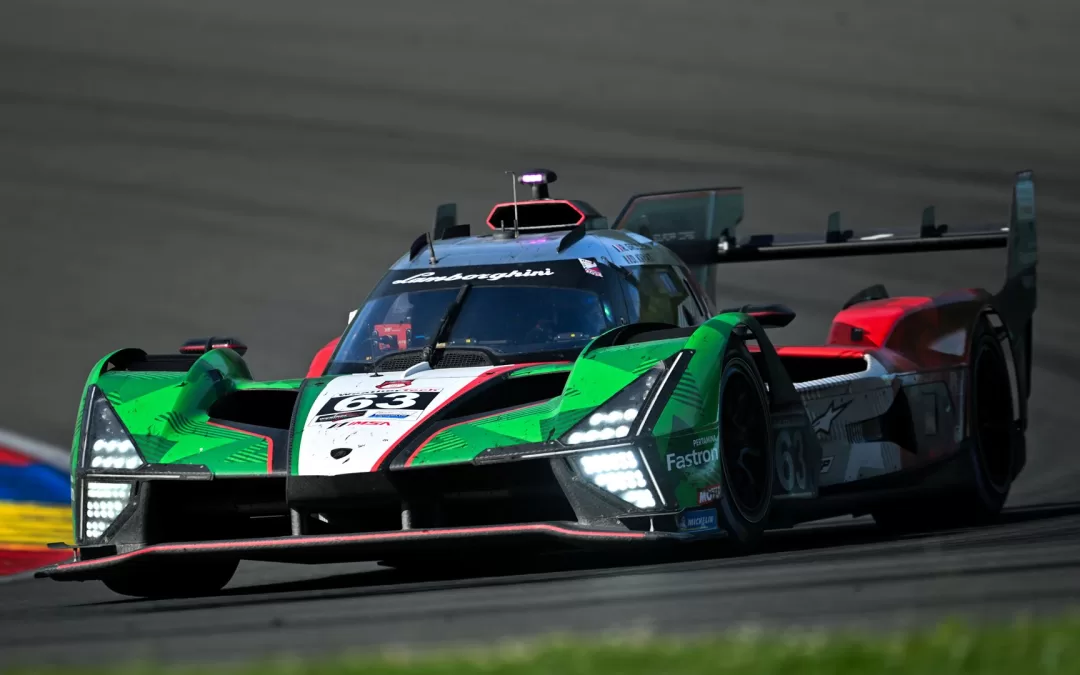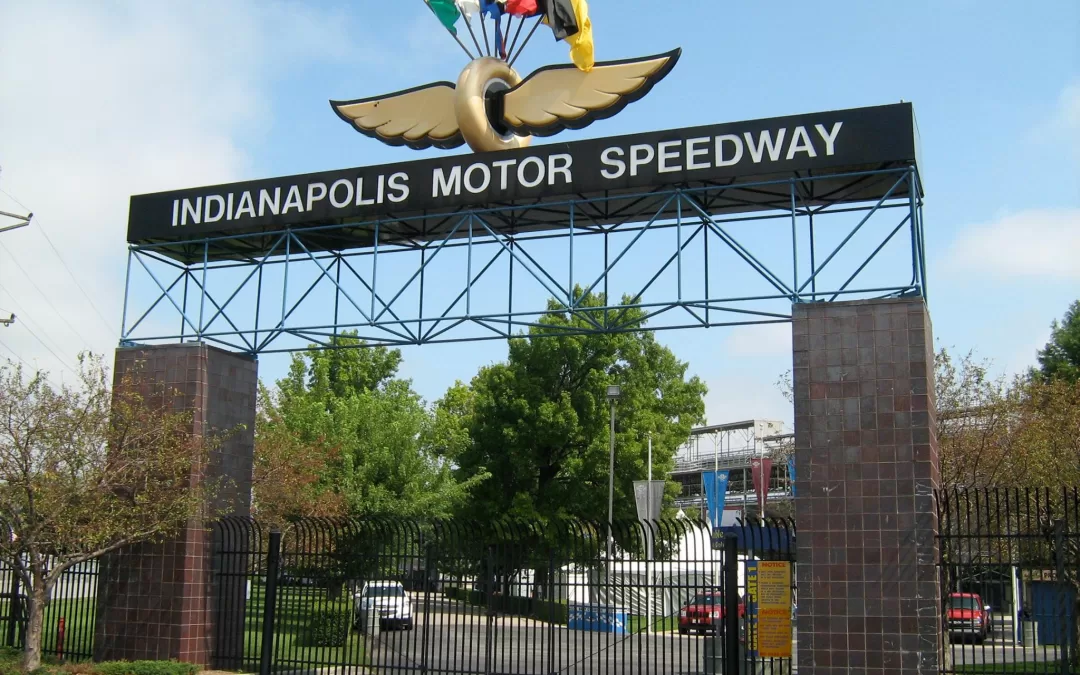
by Lamborghini Fan 1 | Oct 16, 2025 | Vintage / History
The Ultimate Analogue Hammer: Diablo at 35
Three and a half decades after its debut, Lamborghini’s V12 titan—the first production car to shatter the 200 mph barrier—proves why untamed analog terror still reigns supreme in the collector world.
In the pantheon of wedge-shaped hypercars, few machines command the simultaneous reverence and terror of the Lamborghini Diablo. As this Italian icon celebrates its 35 Anniversary, its legacy isn’t just about speed; it’s about unapologetic, analogue excess. This was the car that defined the 1990s supercar dream, mixing raw muscle with surprising technological audacity.
The Devil’s Mandate: 200 MPH or Bust
The Diablo’s mission, which began in 1985 as Project 132, was simple: replace the legendary Countach and become the fastest road car in the world. Initial sketches by Marcello Gandini were dramatic, but it was Chrysler’s brief ownership in the late 80s that refined the lines, giving the final product the muscular haunches and low-slung stance we know today.
When it launched in 1990, unveiled dramatically at the Monte Carlo Rally, the results were brutal and immediate. At its heart lay a ferocious 485HP V12 engine, an evolution of the Countach’s powerhouse.
Analogue Terror Meets Luxury
Despite its speed, the Diablo introduced a level of sophistication previously unheard of in a Sant’Agata special. Lamborghini used carbon fiber inserts (a first for the company) within the steel tubular frame, and engineered sophisticated suspension to tame the V12’s fury.
Yet, this devil had a comfortable side: adjustable seats, electric windows, and even an Alpine stereo system. This duality—brutally quick performance paired with actual luxury and the retention of the iconic scissor doors—is what made the Diablo a cultural phenomenon.
But make no mistake: the early Diablos, lacking power steering and ABS, demanded respect. As Alessandro Farmeschi, After Sales Director at Lamborghini, notes: “The Diablo is a model of growing strategic importance to Polo Storico. A new generation of collectors… see this car as a cultural and design icon,” confirming the value of preserving these untamed machines.
The Evolution of the Species
Over its eleven-year production run (1990–2001), the Diablo constantly shifted to meet new demands and new ownership:
- 1993: Viscous Traction (VT): The first V12 Lamborghini to gain All-Wheel Drive for improved stability—a feature that would become a hallmark of subsequent V12 models. The SE30 arrived the same year, pushing power to 525hp to celebrate the company’s 30th anniversary.
- 1995: VT Roadster: Lamborghini finally offered an open-top V12, with a removable targa panel.
- 1998: The Audi Revolution: Following the acquisition by Audi, the model received a major restyling. The classic pop-up headlights were replaced by fixed units, and modern systems like ABS were finally added. Displacement increased, and the final versions, culminating in the GT and the VT 6.0, featured design input from Luc Donckerwolke. The GT was the ultimate evolution, boosting power to 575hp.
This era also saw Lamborghini embrace official racing with the Diablo SV-R and the monstrous GT-R track machines, proving the V12’s endurance on the world stage.
Hollywood Hellion and Rising Star
The Diablo’s influence extended far beyond the asphalt of Nardò. It was the quintessential ’90s superstar, appearing everywhere from Jim Carrey’s famous red model in Dumb and Dumber to the cover of the Need for Speed franchise. Jay Leno, Mike Tyson, and Jamiroquai’s Jay Kay all owned one, cementing its status as a global symbol of power and luxury.
Today, the Diablo’s value is soaring. Models, especially the rare SV-R, GT, and SE30 variants, are setting records at auction. As the last truly analogue, brutally powerful V12 flagship before the Murciélago introduced a new generation of refinement, the Diablo stands as a magnificent, terrifying, and irreplaceable piece of automotive history. Thanks to Polo Storico, its legacy—and its danger—are preserved for those brave enough to hold the sword.

by Lamborghini Fan 1 | Oct 16, 2025 | Sedans / SUVs, Vintage / History
In the hallowed halls of Lamborghini, where names like Miura and Countach echo with the thunder of V12s and the sharpness of razor-edged design, there exists a curious, often overlooked beast: the Espada. Often overshadowed by its more flamboyant two-seater siblings, the Espada stands as a testament to Ferruccio Lamborghini’s initial vision – not just for outright speed, but for luxurious, high-performance grand touring. And after spending some quality time with a pristine Series III example, it’s clear this four-seater bull deserves far more than a passing glance.
A Bold Statement in Steel and Glass
Unveiled at the 1968 Geneva Motor Show, the Espada – Spanish for sword – was a radical departure for the nascent supercar manufacturer. While the Miura was redefining the mid-engined exotic, the Espada offered something almost unthinkable: a genuine four-seater that could comfortably devour continents at warp speed.
Penned by Marcello Gandini at Bertone, the Espada is undeniably a child of its era. Its silhouette is long, low, and surprisingly sleek for its substantial dimensions. The most striking feature is undoubtedly the vast expanse of glass, especially the panoramic rear window, which gives the car a unique, almost fastback-wagon aesthetic. It’s a design that dares to be different, a testament to Gandini’s willingness to push boundaries. Is it conventionally beautiful in the same way a Miura is? Perhaps not to everyone, but it possesses an undeniable presence and a futuristic allure that still turns heads today.
The Heart of a Bull, the Soul of a Tourer
Under that long, aristocratic bonnet lies the familiar heart of a Lamborghini: a magnificent 3,929 cc DOHC V12. In its initial Series I guise, it produced a healthy 325 bhp, rising to 350 bhp for the Series II and III. Mated to either a five-speed manual gearbox (the overwhelming choice for enthusiasts) or, surprisingly, a three-speed automatic, the Espada offered genuine supercar performance for its day. Top speeds nudged 150 mph, and the sprint to 60 mph was dispatched in a respectable 6.5 seconds – astounding for a car that could comfortably carry four adults and their luggage.

by Lamborghini Fan 1 | Oct 16, 2025 | Motorsports, Super Trofeo NA
World Speed Motorsports has concluded a highly successful partial season in the 2025 Lamborghini Super Trofeo Championship. The team’s efforts were highlighted by podium finishes and strong performances from both their Pro and Pro-Am entries.
Through the first ten rounds of the season, the team, spearheaded by the No. 22 Graham Prewett Inc. Lamborghini Huracán Super Trofeo EVO2 piloted by Jaden Conwright and Scott Huffaker, has firmly established itself as a premier contender in the highly competitive Pro class.
Their exceptional run is defined by remarkable consistency, flawless operational execution, and a stunning streak of podium finishes at every circuit visited.
ROUNDS 1 & 2: Sebring International Raceway – Immediate Impact
Kicking off the season at the notoriously demanding Sebring International Raceway, the duo of Jaden Conwright and Scott Huffaker made an immediate impact. Despite the team’s late start to preparation—as noted by Team Manager Jan Trojan, they “didn’t get to come out for the week of testing prior”—the No. 22 demonstrated exceptional skill and consistency. The combined effort resulted in securing two podium finishes in the Pro class, a powerful debut that instantly solidified their position as top contenders. Watch rounds 1 and 2…
ROUNDS 3 & 4: WeatherTech Raceway Laguna Seca – Speed and Execution Shine
WeatherTech Raceway Laguna Seca proved to be a weekend of high speed mixed with racing misfortune. The team’s raw pace was undeniable: the No. 15 entry secured pole position for Race One, with driver Dario Capitanio masterfully leading an impressive 15 laps and controlling the overall pace. Co-driver Cam Aliabadi brought the car home for a top five finish in the Pro-Am class.
Meanwhile, the No. 22 demonstrated its relentless pace, culminating in one well-deserved podium finish. Crucially, the World Speed pit crew proved their operational excellence by executing pit stops that were consistently the quickest across the entire field. Further underlining their pace, the No. 22 logged a fastest lap time of 1:24.446, a mere fraction of a second behind the fastest overall time. Despite battling penalties and a punctured tire, the team’s performance signaled their potential for outright victory. Watch rounds 3 and 4…
ROUNDS 5 & 6: Watkins Glen International – A Halfway Point Triumph
At the halfway mark of the championship, held at the fast and challenging Watkins Glen International, the No. 22 car continued its remarkable consistency. Navigating a crowded field of 37 cars, the team qualified 11th for Race One and improved to 8th for Race Two, despite a red flag truncating the second qualifying session.
In Race One, the car fought forward, gaining five positions to finish 6th. Race Two was a masterclass in execution: starting 8th, Jaden Conwright delivered a stellar opening stint, gaining five positions. A flawless mandatory pit stop by the crew further cemented the advantage, allowing Scott Huffaker to bring the car home for a decisive 3rd place overall finish. The team’s record of completing every lap of every session remained intact. Watch rounds 5 and 6…
ROUNDS 7 & 8: Road America – Extending the Podium Streak
In front of a massive crowd at the 4.048-mile Road America circuit, the WSM team once again showcased blistering speed. Despite chaotic qualifying sessions—including one session limited to just four laps—the No. 22 secured the fifth-fastest overall time and a fifth-place class start for Race 2.
The hard work paid off in both races: the team crossed the finish line in third place in Race 1, extending their impressive podium streak. Race 2 was an intense battle where Huffaker and Conwright again piloted the Huracán to a podium, officially finishing third after a post-race ruling adjustment. As Team Manager Jan Trojan noted, “securing two trophies and getting the car back without any damage is a testament to the skill and dedication of our drivers and team.” Watch rounds 7 and 8…
ROUNDS 9 & 10: Indianapolis Motor Speedway – Finishing Strong
Closing out the North American leg of the season at the iconic Indianapolis Motor Speedway, the No. 22 Graham Prewett Huracán ran at the front of the field all weekend. In Race One, Huffaker immediately charged into second place at the start. Another flawless pit stop by the crew ensured Jaden Conwright could maintain the blistering pace to the end, finishing 2nd in the Pro Class. The strong performance was mirrored in the final race of the weekend, where the World Speed / Graham Prewett Lamborghini brought home another strong 2nd place overall finish.
This unwavering consistency has propelled the No. 22 WSM/Graham Prewett Huracán to 4th in the Pro Championship standings as the rest of the series heads towards its final stages in Europe. Watch rounds 9 and 10…
World Speed Motorsports has announced that they will not be participating in the final rounds of the Lamborghini Super Trofeo Championship at Misano. The decision stems from the significant costs associated with shipping the cars to Europe for the final races and the World Championships. Instead, the team has chosen to allocate their resources towards testing and preparation for the upcoming 2026 season.
Drivers looking to test for the 2026 season should visit: www.WorldSpeed.com/drivers

by Lamborghini Fan 1 | Oct 16, 2025 | Motorsports, Super Trofeo NA
Danny Formal and Hampus Ericsson dominated the Lamborghini Super Trofeo North America weekend at the Indianapolis Motor Speedway, sweeping both races. They secured a commanding victory in Saturday’s Race 2 despite a yellow-flag impact, starting from pole in the No. 1 Wayne Taylor Racing (WTR) Lamborghini Huracan Super Trofeo EVO2. WTR made it a team 1-2 finish overall, as Trent Hindman and Jackson Lee took home the Pro-Am class win, completing their own class sweep in the No. 69 WTR machine.
The Pro-Am class finish was secured after several competitors, including Will Bamber and Colin Queen, were penalized for “passing outside of track limits,” which also promoted Scott Huffaker and Jaden Conwright to second in Pro Class.
The weekend saw sweeps in all four classes, with Mateo Siderman winning the Am class and Nick Groat taking the LB Cup for the second day in a row. The race included a lengthy full-course caution triggered by a multi-car incident involving Conrad Geis, Sean McAuliffe, and Dean Neuls, the latter of whom escaped safely from a car engulfed in flames.
Get the complete results, and watch the re-broadcasts here!…

by Lamborghini Fan 1 | Sep 23, 2025 | Motorsports
Indianapolis Motor Speedway can be a cruel mistress, and for the Lamborghini SC63 team, the penultimate round of the IMSA WeatherTech SportsCar Championship was a harsh lesson in motorsport’s unforgiving nature. What looked to be a stellar top-five finish for the #63 LMDh—driven by the formidable pairing of Edoardo Mortara and Romain Grosjean—slipped through their fingers in the final hour, leaving them with a 10th-place finish that didn’t reflect their impressive performance.
The weekend started with high hopes and a key upgrade. The SC63 arrived with a new rear suspension, and the “Evo joker” immediately paid dividends. In practice, the car showed strong pace, with the team focusing on race-length fuel runs. Grosjean’s best qualifying lap of 1m15.170s was quick enough for ninth, which became an eighth-place grid spot after a competitor’s penalty. The team was within four-tenths of a second of the top time, a clear sign of their progress.
A Day of Promise
From the drop of the green flag, the #63 was on the move. Grosjean wasted no time, jumping two positions by the first corner and settling into seventh. Despite a flurry of full-course yellows in the first half of the race, the Lamborghini crew’s strategy was on point, and they climbed into the top five after the first round of pit stops. For much of the six-hour enduro, the SC63 was a consistent presence in the lead pack, matching the pace of the front-runners and showcasing its true potential.
Mortara took over for a strong middle stint, expertly managing fuel and holding his ground against the GTP field. “I had two really long stints where I was saving a lot of fuel, which was a nice surprise, matching the pace of the others,” he noted. “It was a pleasure to fight at the front and showcase our potential.”
The Cruel Twist of Fate
As the race entered its final hour, strategy became the defining factor. In a battle with a lapped Porsche, Grosjean made slight contact, sending the #63 momentarily onto the grass. The team seized the opportunity, calling Grosjean in for a short, energy-only pit stop—a high-stakes gamble to gain track position for the final sprint.
Unfortunately, fate had other plans. A full-course yellow flew soon after, neutralizing the race and trapping the #63 on the wrong side of the cycle. The short stop, meant to be a strategic masterstroke, became a costly mistake, and the car dropped to 10th, where it would ultimately finish.
Looking Ahead to Petit Le Mans
While the final result was disappointing, both drivers found plenty of positives to take away. “I think we’ve worked well as a team; this was the first time that we’ve really been in the mix, in the top five all day, so I think we can take this as a positive,” Grosjean said.
For Mortara, who finally got to complete his first IMSA race of the season, the potential was clear. “Without this I think there was the potential to finish in the top five,” he reflected.
The team now shifts its focus to the season finale at Road Atlanta, the 10-hour Petit Le Mans, which will also be the final outing for the Lamborghini SC63 before it takes a sabbatical. After a performance like the one at Indy, the team will undoubtedly be gunning for a high note to end their campaign.

by Lamborghini Fan 1 | Sep 23, 2025 | Motorsports, Super Trofeo NA
At the iconic Indianapolis Motor Speedway, the factory-backed Wayne Taylor Racing team showcased their dominance, sweeping both races in the Lamborghini Super Trofeo North America series. The team, which had the advantage of performing five extra days of testing at the track, saw their drivers Danny Formal and Hampus Ericsson clinch victory in the Pro class. Similarly, teammates Trent Hindman and Jackson Lee secured a double win in the ProAm class, with Lee celebrating in front of his hometown crowd.
Despite being a small, one-car team with no pre-event Indianapolis testing, World Speed Motorsports had a remarkable weekend. Their drivers, Jaden Conwright and Scott Huffaker, finished an impressive second in both Pro class races, a notable achievement for the team competing against the well-resourced competition.
The weekend saw double victories across all classes. In the Am class, Mateo Siderman of TR3 Racing took home both wins, while Nick Groat of ONE Motorsports completed the sweep in the LB Cup class. Groat’s double win at Indianapolis was especially significant, as it secured him the championship with one race weekend to spare, marking his second consecutive title.
The results from Indianapolis have set the stage for a dramatic conclusion to the season. The final two rounds of the North American championship will be held at the Misano World Circuit in Italy on November 6-7, followed by the Lamborghini World Finals on November 8-9. While Groat has sealed the LB Cup title, the championships in the Pro, ProAm, and Am classes remain wide open, promising intense battles for the final points. Formal and Ericsson hold an 18-point lead in the Pro class, while a tight seven-point gap separates the top two in ProAm. In the Am class, the championship remains incredibly close, with the top three competitors separated by just ten points heading into the final races.
Quotes:
Pro
Danny Formal (No. 1 Wayne Taylor Racing): (on race 2 win): “Well, first of all I want to thank Hampus. He didn’t do many laps due to the caution, but he did really well. Obviously in the start, he did a fantastic job. It’s very hard to start here. When you’re down the inside, it’s very dirty. He did a fantastic job there. The restart after that long yellow is never easy. Hampus had a great restart, and he pulled a nice little gap. I got some good out laps, and I was able to maintain that lead that we had. So just so thankful to the team, we did minimal changes all weekend. I’m talking about one little change all weekend. That’s how good these cars are rolling out. We’re going to Misano. I was there in 2021 and it’s an amazing racetrack. So, we have a good baseline going there. I’m excited to go fight for the championship.”
Hampus Ericsson (No. 1 Wayne Taylor Racing): “It’s just been a great weekend It feels so good to win again. Same as in Road America with two wins and two poles here in Indianapolis. It’s an unbelievable feeling and I can’t wait to fight for the championship in Italy as well. We’ll see what happens, but confidence is high.”
ProAm
Jackson Lee (No. 69 Wayne Taylor Racing): “I couldn’t be happier with the results from this weekend. Getting two class wins, but as well as two overall podiums, I couldn’t ask for a better weekend. I know we’ve got a lot of guests, a lot of friends and family between both me and the team, so it just makes it all the much more special. So, big thanks to all my supporters and all the team and the team supporters.”
Trent Hindman (No. 69 Wayne Taylor Racing): “Really fun weekend here at Indianapolis. There’s always the expectation when you have me and Jackson in the car that we want to be in the fight for the win and be one of the quicker cars on track. But to have the weekend go the way it went with very few hiccups and just a really, really great result for the team as a whole between the Pro and ProAm categories.”
Am
Mateo Siderman (No. 63 TR3 Racing): (on race 2 win): “It was a bit of a sprint race; this really felt like it,” Siderman said. “It enforces what we did yesterday, and it paid off for us. Really thankful to TR3, Lamborghini Westlake and the team.”
LB Cup
Nick Groat (No. 57 ONE Motorsports): (on race 2 win): “Finishing off the season and locking down the championship at Indy is a huge deal. Super Trofeo is honestly my favorite thing in the world, and I can’t wait to come back next year. We’re going to have to put in a lot of work. The competition in LB Cup has been fantastic, and the growth that my competitors have seen this season too is impressive and I’m just so proud of all of them and what they’ve done. I’ve loved battling with them all season. I just can’t wait for more.”
Watch the rebroadcasts and view complete race results here…

by Lamborghini Fan 1 | Sep 16, 2025 | Etcetera, Modern, Recent Models, Sedans / SUVs
The rumble of V8 engines isn’t a sound you’d typically associate with the tranquil landscape of Zion National Park. But in early September, a convoy of Lamborghini Urus SEs descended upon the Utah wilderness for an exclusive, three-day event. This wasn’t just a scenic drive; it was a testament to the versatility of Lamborghini’s first plug-in hybrid Super SUV, a vehicle designed to conquer both the urban jungle and the rugged, off-road frontier.
The Esperienza Avventura Zion event brought a select group of owners and their guests to this stunning corner of the Virgin River Valley. Over the course of the program, they covered more than 200 miles, pushing the Urus SE through diverse and demanding terrain. With its new design, optimized aerodynamics, and an 800 CV hybrid powertrain, the Urus SE is a significant step forward from its predecessor, delivering improved comfort, performance, and efficiency without sacrificing the exhilarating driving experience Lamborghini is known for. The dual power sources—a combustion engine and an electric motor—give the Urus SE unprecedented torque and power, solidifying its place as the benchmark in the Super SUV segment.
The adventure began at Autocamp Zion, a luxury retreat offering private Airstreams nestled within the desert landscape. After a welcome reception and a gourmet outdoor dinner, guests prepared for the main event: a full day of driving through Zion’s winding roads and challenging off-road trails.
The next morning, the group embarked on a 140-mile journey, their Urus SEs navigating the enormous red and pink sandstone cliffs. The route was punctuated with unique experiences, including a coffee stop at Zion Mountain Ranch and even a chance to go sand dune surfing at Coral Pink Sand Dunes State Park. Lunch was served at the historic Zion Wright Family Ranch, where guests could also take in the spectacular views from horseback. The day concluded with a “farm-to-table” dinner back at the camp, followed by a bonfire and s’mores under the vast desert sky.
The final morning focused on wellness, with an energizing yoga session and a relaxing sound bath before guests departed. The Esperienza Avventura Zion wasn’t just about the driving; it was about creating a community of passionate Lamborghini owners and giving them an unforgettable experience. The Urus SE proved its mettle on every surface, transforming the rugged Utah wilderness into a playground worthy of the Lamborghini crest. It’s clear the Super SUV has once again raised the bar for what a luxury vehicle can be, proving that true performance knows no bounds—on-road or off.
Learn about upcoming Lamborghini experiences, shows, and events here…

by Lamborghini Fan 1 | Sep 16, 2025 | Modern, Motorsports
After a strong showing at Watkins Glen, the Lamborghini SC63 is heading to the Indianapolis Motor Speedway for the “Battle on the Bricks” with high hopes. Lamborghini Factory Driver Romain Grosjean, who led a significant portion of the previous race, will be joined by Edoardo Mortara in the #63 LMDh prototype. Mortara is stepping in for Mirko Bortolotti and making his first GTP class appearance since the season opener at Daytona.
The team is aiming to build on its best performance yet, which saw the #63 lead for a significant portion of the Watkins Glen six-hour race before a late-race fuel stop dropped it to seventh. The Indianapolis Road Course holds special significance, as it was the scene of the SC63’s breakthrough race last season. During that event, Grosjean famously carved his way from 10th to the lead before an unfortunate incident with a GTD car ended the day prematurely. The team is now eager for a strong, clean run to the checkered flag.
Lamborghini GT3s Also Aiming for a Strong Weekend
The #9 Pfaff Motorsports GTD Pro team, with drivers Marco Mapelli and Andrea Caldarelli, is looking to rebound from a tough race at Watkins Glen. Despite Caldarelli putting the Lamborghini Huracán GT3 EVO2 on pole, a technical issue forced them to retire from the race. Mapelli is back in the car after missing the last round to compete in the Nürburgring 24 Hours.
In the GTD class, both the #45 Wayne Taylor Racing and #78 Forte Racing teams are looking for better results. The #45 crew of Danny Formal, Trent Hindman, and Graham Doyle will be pulling double duty, also competing in the Lamborghini Super Trofeo series. They’ll be looking to bounce back from a late-race retirement at VIR. The #78 Forte Racing Huracán GT3 EVO2, driven by Mario Farnbacher and Misha Goikhberg, also has its sights set on a podium finish after a penalty at Mosport dropped them out of contention for a victory.
A Weekend of Racing and Support
In addition to the on-track action, Lamborghini Squadra Corse is supporting IMSA’s Resilient Racers program, which raises awareness for children facing serious illnesses. This weekend’s Resilient Racer is Franco Renhack, who has lived with epilepsy since he was a toddler. Franco’s name will be proudly displayed on the #63 Lamborghini SC63 throughout the event.
The “Battle on the Bricks” takes place on Sunday, September 21, with the race kicking off at 11:40 a.m. EST.
More information: https://www.indianapolismotorspeedway.com/

by Lamborghini Fan 1 | Sep 16, 2025 | Motorsports, Super Trofeo NA
Indianapolis Motor Speedway September 18th – 20th, 2025
Thursday, September 18
- 11:35am – 12:20pm Practice
- 3:15pm – 4:00pm Practice
Friday, September 19
- 10:20am – 10:35am Q1
- 10:40am – 10:55am Q2
- 4:00pm – 4:50pm Race 1
Saturday, September 20
IMSA Live Timing is here… IMSA Official Results are here…
